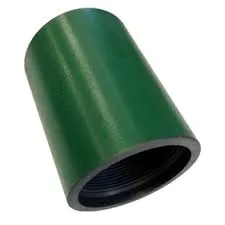- Afrikaans
- Albanian
- Amharic
- Arabic
- Armenian
- Azerbaijani
- Basque
- Belarusian
- Bengali
- Bosnian
- Bulgarian
- Catalan
- Cebuano
- Corsican
- Croatian
- Czech
- Danish
- Dutch
- English
- Esperanto
- Estonian
- Finnish
- French
- Frisian
- Galician
- Georgian
- German
- Greek
- Gujarati
- Haitian Creole
- hausa
- hawaiian
- Hebrew
- Hindi
- Miao
- Hungarian
- Icelandic
- igbo
- Indonesian
- irish
- Italian
- Japanese
- Javanese
- Kannada
- kazakh
- Khmer
- Rwandese
- Korean
- Kurdish
- Kyrgyz
- Lao
- Latin
- Latvian
- Lithuanian
- Luxembourgish
- Macedonian
- Malgashi
- Malay
- Malayalam
- Maltese
- Maori
- Marathi
- Mongolian
- Myanmar
- Nepali
- Norwegian
- Norwegian
- Occitan
- Pashto
- Persian
- Polish
- Portuguese
- Punjabi
- Romanian
- Russian
- Samoan
- Scottish Gaelic
- Serbian
- Sesotho
- Shona
- Sindhi
- Sinhala
- Slovak
- Slovenian
- Somali
- Spanish
- Sundanese
- Swahili
- Swedish
- Tagalog
- Tajik
- Tamil
- Tatar
- Telugu
- Thai
- Turkish
- Turkmen
- Ukrainian
- Urdu
- Uighur
- Uzbek
- Vietnamese
- Welsh
- Bantu
- Yiddish
- Yoruba
- Zulu
Casing Couplings: The Unsung Heroes of Well Construction
Casing Couplings: The Unsung Heroes of Well Construction
In the intricate world of oil and gas exploration, the term "casing coupling" might not immediately ring a bell for the layman. However, this unassuming component plays a crucial role in the successful construction and completion of wells.
A Crucial Link in the Chain
A casing coupling, also known as a collar, is essentially a tubular section of pipe designed to connect two joints of casing. These couplings are threaded internally, allowing them to securely join the ends of adjacent casing sections. This simple yet vital function ensures the integrity of the wellbore, preventing leaks and maintaining the structural stability of the casing string.
Beyond Basic Functionality
While their primary function is to connect, casing couplings also contribute significantly to the well's overall performance and longevity. They can be equipped with various features, depending on the specific application and well conditions. Some of these features include:
- Corrosion Resistance: Couplings can be made from various materials, including high-strength steel, to withstand harsh environments and prevent corrosion.
- Internal and External Profiles: Different internal and external profiles can be used to optimize the connection strength and ensure proper sealing.
- Specialized Features: Couplings may incorporate features like integral packers, pressure relief valves, or even flow control devices, depending on the well's specific requirements.
Caing Coupling
Types of Casing Couplings
Casing couplings come in various forms, categorized by their design and application:
- Standard Couplings: These are the most common type, used for general casing applications.
- Heavy-Wall Couplings: Designed for high-pressure and high-temperature conditions, these couplings offer increased strength and resistance.
- Specialty Couplings: These are customized for specific applications, such as liner hangers, production hangers, or packers.
A Vital Component
In conclusion, casing couplings are essential components in the oil and gas industry, contributing significantly to the successful completion and long-term performance of wells. Their unassuming presence belies their vital role in ensuring the structural integrity, safety, and efficiency of the entire wellbore system. From connecting casing sections to incorporating specialized features, casing couplings play a crucial role in unlocking the earth's valuable resources.
-
Tubing Pup Joints: Essential Components for Oil and Gas OperationsNewsJul.10,2025
-
Pup Joints: Essential Components for Reliable Drilling OperationsNewsJul.10,2025
-
Pipe Couplings: Connecting Your World EfficientlyNewsJul.10,2025
-
Mastering Oilfield Operations with Quality Tubing and CasingNewsJul.10,2025
-
High-Quality Casing Couplings for Every NeedNewsJul.10,2025
-
Boost Your Drilling Efficiency with Premium Crossover Tools & Seating NipplesNewsJul.10,2025








